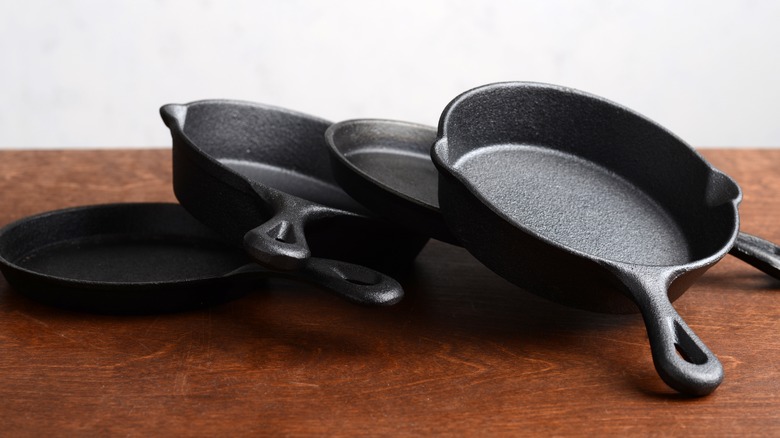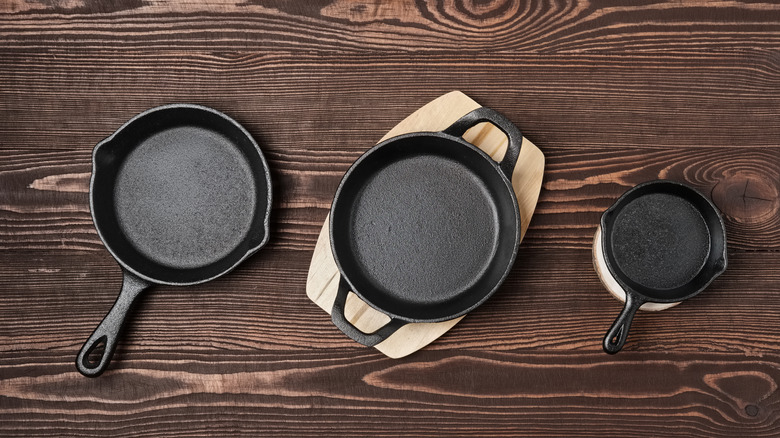Why The Markings On Your Griswold Cast Iron Pans Don't Matter
When it comes down to it, the cast iron pan is iconic. It's notoriously heavy, weighing anywhere from six to eight pounds, it needs to be seasoned and washed in very specific ways, or else it gets ruined, and it gets hot — really hot (via kitchn). If you haven't used a cast iron pan yourself, you've probably seen them used in cartoons to comically bludgeon a character upside the head, or perhaps you've noticed one used on your favorite culinary show.
The truth is, the history of the cast iron pan goes back further than most of us would imagine. Webstaurant Store claims that cast iron cookware was used during the Han Dynasty (206 B.C.– 220 A.D.) in China. It only became popular in Europe as recently as the 16th century, but since then we've used them to fry up our bacon and eggs, cook cornbread, and brown up steaks.
Those markings are for informational purposes
The Griswold cast iron business was founded in Erie, Pennsylvania. It began producing iron accessories in 1865 and cookware starting in 1870. The company marked the bottom of its products with words and symbols (via Kitchen Sanity). And though these markings may help to indicate when and where the cast iron was manufactured, The Pan Handler notes that symbols on the Griswold cast iron pans don't indicate any special quality the cookware has. Instead, the marks indicate basic information such as the number of molds, where they were made, or even what they were made for.
But if you are curious about the numbers on your Griswold, The Cast Iron Collector tells us that they may allude to the dimensions of your skillets, with numbers relating to the number in an old catalog and their increasing or decreasing sizes, though it's difficult to discover exactly what your Griswold pan's number might be referring to if you don't have the original catalog it was ordered from. According to Boonie Hicks, the Griswold Manufacturing Company made everything from griddles, skillets, kettles, and scotch bowls, and even expanded into electric ovens, sandwich makers, and waffle irons before being officially sold off in 1969.

